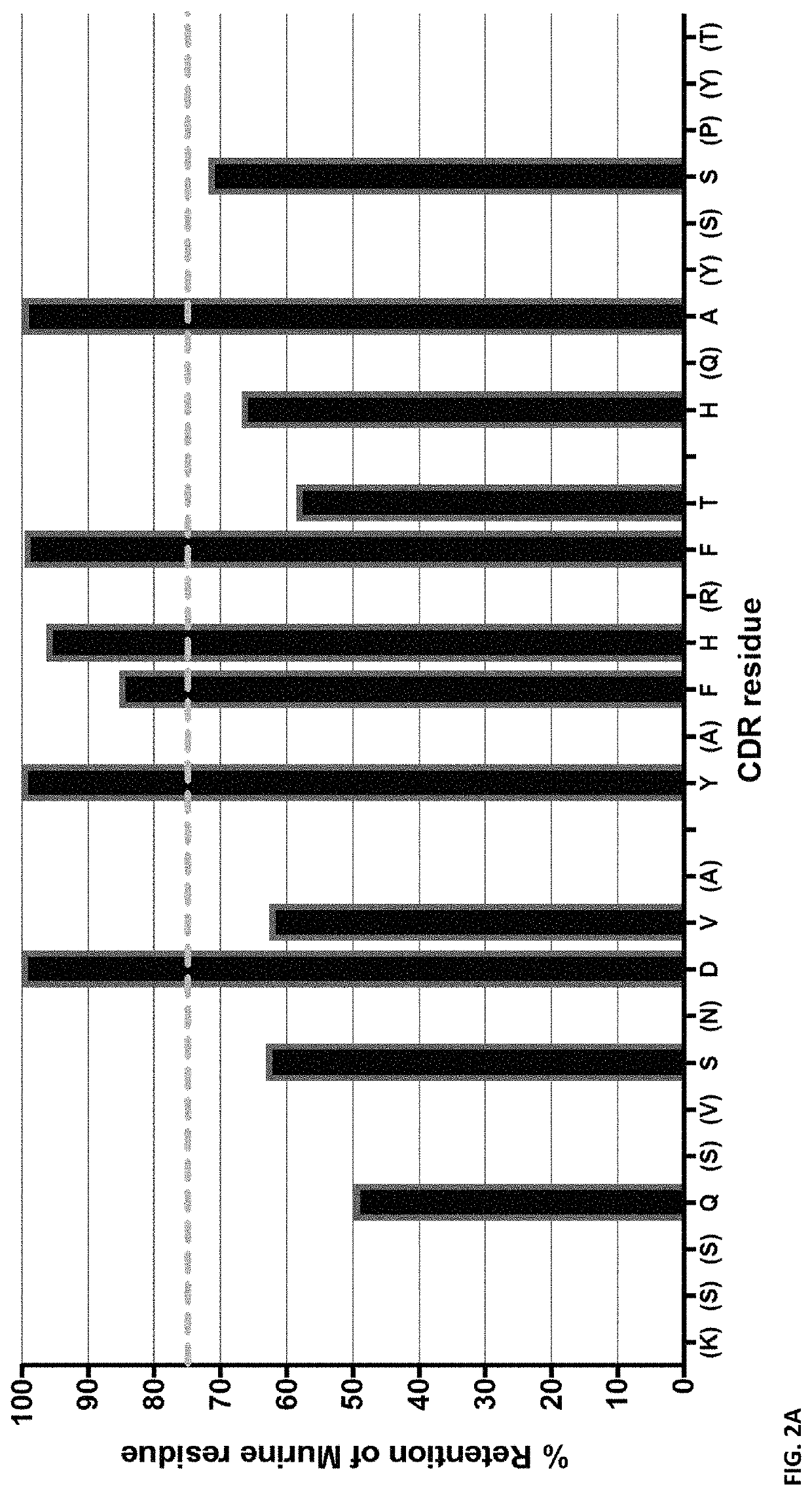PD1 binding agents
a technology of binding agents and antibodies, applied in the field of pd1 binding agents, can solve the problems of humanizing antibodies using this basic grafting method and still carrying significant clinical development risks, and antibodies such as pd1 inhibitors that target immune cell receptors, so as to improve antibody manufacturing properties, enhance and improve human t cell epitope content
- Summary
- Abstract
- Description
- Claims
- Application Information
AI Technical Summary
Benefits of technology
Problems solved by technology
Method used
Image
Examples
example 1
n of Optimized Anti-PD1 Therapeutic Antibodies
[0296]Introduction
[0297]In this example, we successfully generate a panel of agonistic, optimized anti-PD1 antibodies. These anti-PD1 antibodies are well expressed, biophysically stable, highly soluble and of maximized identity to preferred human germlines.
[0298]Materials and Methods
[0299]PD1 Library Generation and Selection
[0300]The PD1 Fab library was assembled by mass oligo synthesis and PCR. The amplified Fab repertoire was then cloned via restriction-ligation into a phagemid vector, transformed into E. coli TG-1 cells, and the phage repertoire rescued essentially as previously described in detail (Finlay et al., 2011, Methods Mol Biol 681: 383-401).
[0301]Phage selections were performed by coating streptavidin magnetic microbeads with biotinylated PD1 target protein (either human or cyno), washing the beads thrice with PBS and resuspending in PBS pH7.4 plus 5% skim milk protein. These beads were coated at 100 nM target protein in rou...
PUM
| Property | Measurement | Unit |
|---|---|---|
| concentration | aaaaa | aaaaa |
| temperature | aaaaa | aaaaa |
| volume | aaaaa | aaaaa |
Abstract
Description
Claims
Application Information
 Login to View More
Login to View More - R&D
- Intellectual Property
- Life Sciences
- Materials
- Tech Scout
- Unparalleled Data Quality
- Higher Quality Content
- 60% Fewer Hallucinations
Browse by: Latest US Patents, China's latest patents, Technical Efficacy Thesaurus, Application Domain, Technology Topic, Popular Technical Reports.
© 2025 PatSnap. All rights reserved.Legal|Privacy policy|Modern Slavery Act Transparency Statement|Sitemap|About US| Contact US: help@patsnap.com



